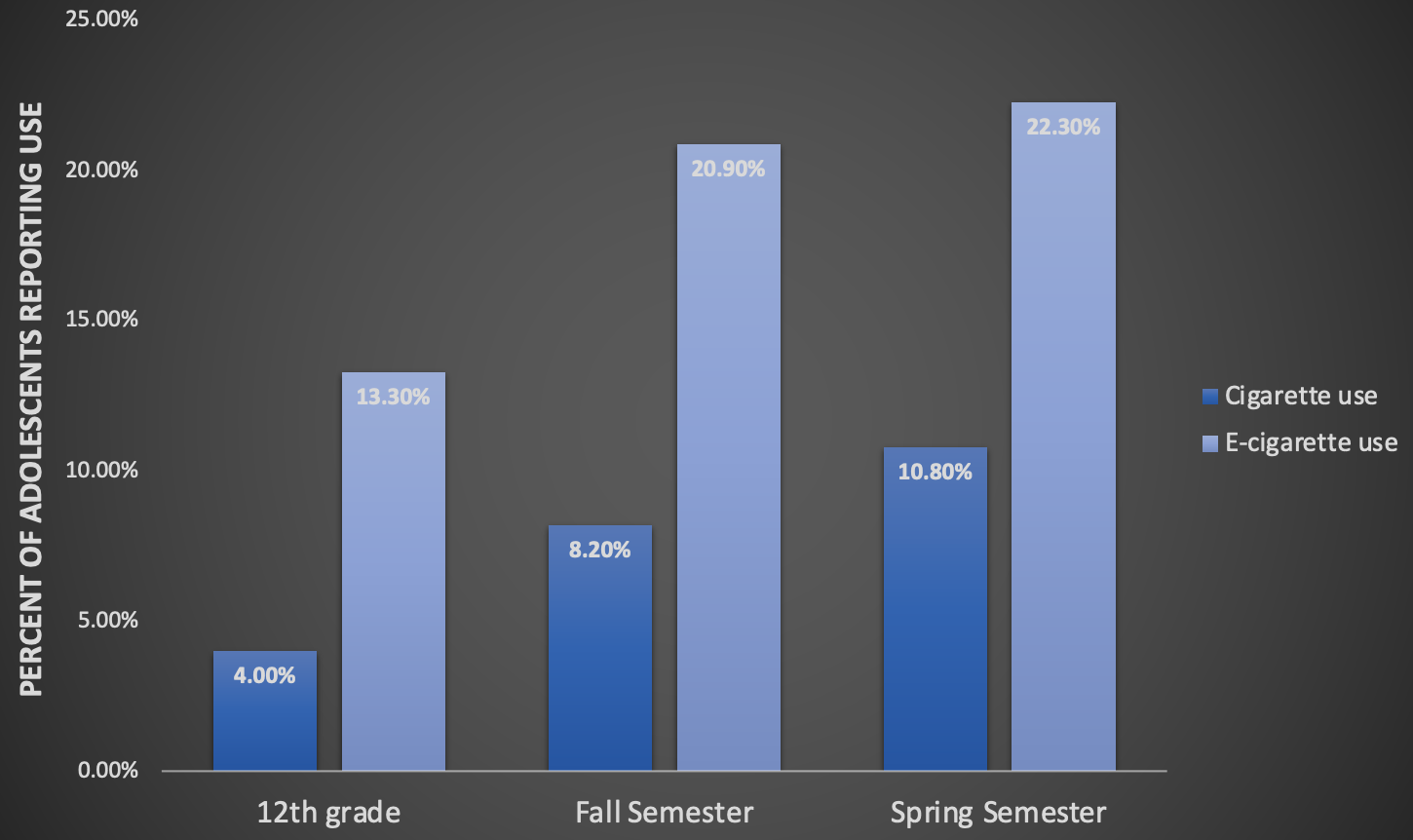Editor’s Note: Can you spare five minutes to tell us your thoughts on The BASIS? Your responses to this short questionnaire will help us improve this free resource and better meet your expectations. Thank you!
College is a time when many young individuals take up drug use, including tobacco. Another relevant factor in nicotine use is Attention Deficit/Hyperactivity Disorder (ADHD) symptoms. This week, ASHES reviews an article by Melissa Dvorsky and colleagues that longitudinally examined the intersections of these two risk factors by looking at the relationship between ADHD symptoms and changes in the use and social perception of tobacco during the first year of college.
What was the research question?
Are ADHD symptoms associated with increased tobacco use and maladaptive social perceptions about tobacco use during the transition from high school to college?
What did the researchers do?
The researchers gathered information regarding mental health and substance use from 150 high school seniors e who had plans to go to college the following fall. Specifically, adolescents completed measures of tobacco use, maladaptive social perceptions about tobacco use (e.g. “Do you think people smoking e-cigarettes have more friends?”) and ADHD symptoms. The participants completed the same measures two other times, once during the fall of their first year of college and once during the spring semester of their first year of college. The researchers used cross-lagged modeling to assess whether ADHD symptoms predicted later cigarette and e-cigarette use and maladaptive social perceptions of cigarettes and e-cigarettes.1
What did they find?
During the spring of senior year, only 4.0% of participants reported that they had smoked at least one cigarette in the past 30 days and 13.3% reported using e-cigarettes within the past 30 days. These numbers increased to 10.8% for cigarettes and 22.3% for e-cigarettes by the time the participants reached the spring semester of their first year of college (see figure). At each time point, participants with more ADHD symptoms were more likely to report current cigarette and e-cigarette use. ADHD symptoms during the senior year of high-school predicted increased e-cigarette use , but not traditional cigarette use, during the fall semester of college. Similarly, ADHD symptoms during the fall semester of college predicted e-cigarette use, but not traditional cigarette use, during the spring semester of college. Finally, participants with more ADHD symptoms in high school held more maladaptive social perceptions of both e-cigarette and cigarette use during the first year of college.

Figure. Percent of adolescents reporting cigarette and e-cigarette use during senior year of high school, fall of freshman year of college and spring of freshman year of college. Click image to enlarge.
Why do these findings matter?
It is useful that this study identified that risk of e-cigarette use is associated with ADHD symptoms before coming to college. This means that identifying and addressing ADHD symptoms during high school could help curb maladaptive thought patterns about tobacco use, as well as e-cigarette use, during college. As a further preventative method, high schools and colleges can use this information to create programs for high school seniors and first-year college students that address e-cigarette and cigarette use and provide accurate information regarding social perceptions of e-cigarette use.
Every study has limitations. What are the limitations of this study?
This study only examined cigarette and e-cigarette use during the beginning of college, and therefore does not get the full picture of how these habits remain throughout the rest of college. It would also be interesting for future research to assess not just social perceptions of cigarette and e-cigarette use, but also actual cigarette and e-cigarette use by the participants’ friends to see if that plays a role in vaping/smoking behaviors.
For more information:
SmokeFree offers tools and tips for quitting and maintaining abstinence from smoking tobacco. The Centers for Disease Control and Prevention also provides research and tips about cigarettes and how to quit. For more details about addiction, visit our Addiction Resources page.
What do you think? Please use the comment link below to provide feedback on this article.
— Alessandra Grossman
________________
[1] Researchers controlled for the following factors in their analyses: gender, living arrangements, university type, family history of smoking and peer smoking behavior.




